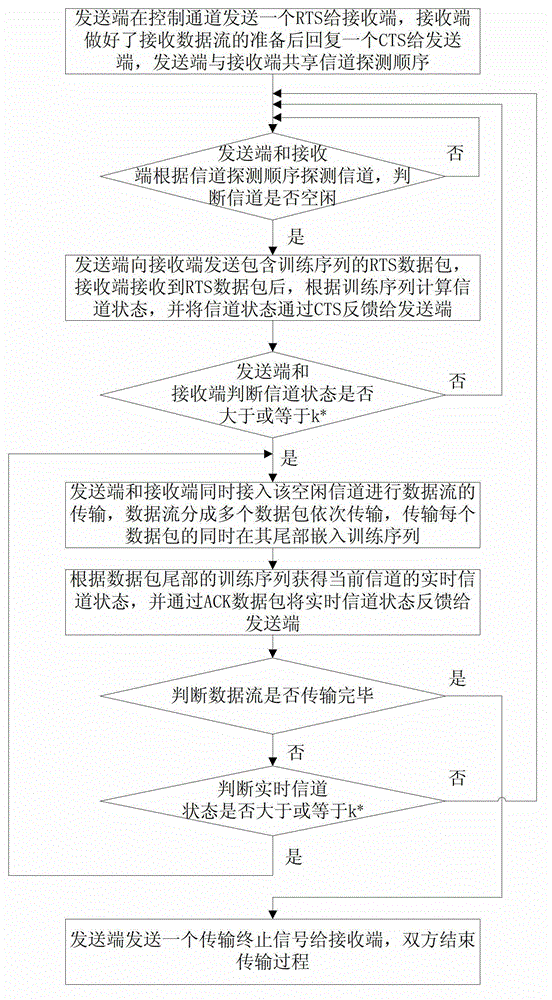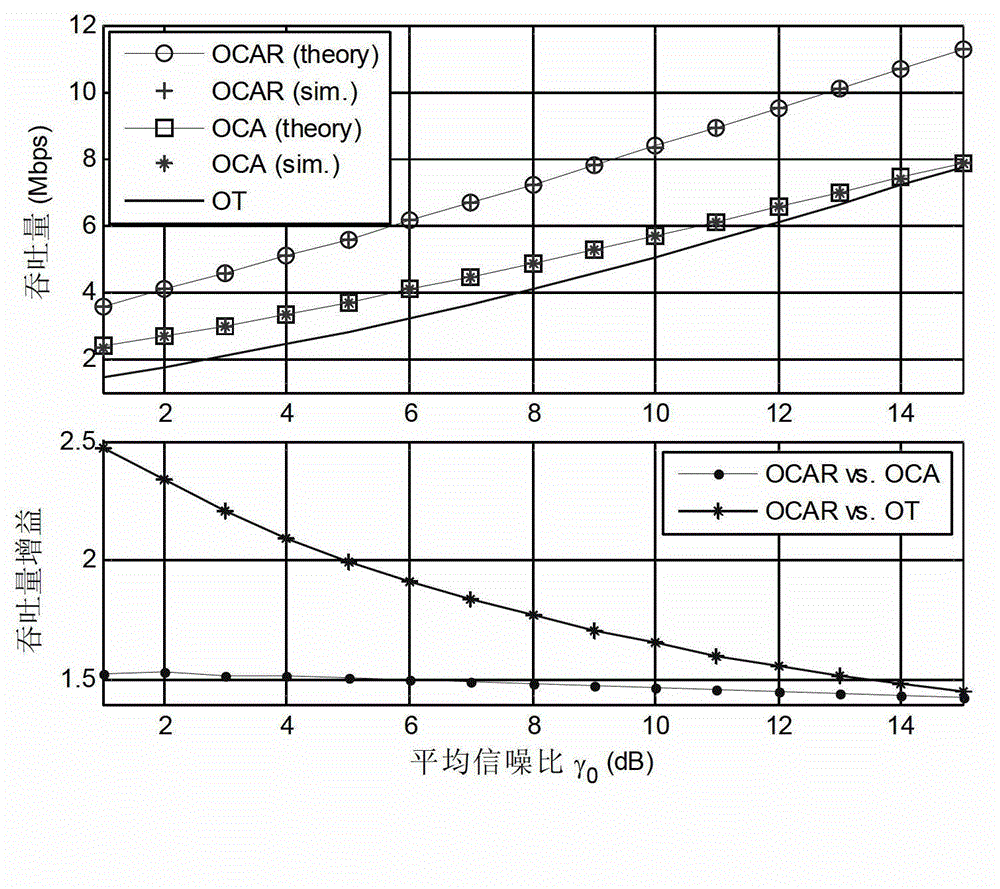Opportunistic channel accessing and switching method and device
A channel access and opportunity technology, applied in wireless communication, using the return channel for error prevention/detection, electrical components, etc., can solve the problems of channel link quality deterioration, transmission opportunity loss, frequency domain transmission opportunity waste, etc.
- Summary
- Abstract
- Description
- Claims
- Application Information
AI Technical Summary
Problems solved by technology
Method used
Image
Examples
Embodiment 1
[0076] A method for opportunistic channel access and switching, comprising:
[0077] The receiving end receives the RTS data packet containing the training sequence sent by the sending end through the detected idle channel; obtains the channel state of the idle channel according to the training sequence, and feeds back the channel state to the sending end through CTS, and the sending end Judge with the receiving end whether the channel state is greater than or equal to the optimal threshold k * , if yes, then access the idle channel to transmit the data stream; otherwise, the sender and receiver switch channels according to the shared channel detection order, and search for and detect the next idle channel.
[0078] In this embodiment, accessing the idle channel for data stream transmission further includes:
[0079] The data stream is divided into multiple data packets and transmitted sequentially, and the training sequence is embedded at the end of each data packet while tr...
Embodiment 2
[0143] In this embodiment, the transmission system is a wireless transmission system in the 500MHz frequency band, and the channel bandwidth is 2MHz; the maximum Doppler frequency shift of the system is 15Hz (that is, the maximum relative moving speed ); the average received signal-to-noise ratio γ 0 =10dB; the duration of each data frame τ d is 1ms; the time spent on channel switching τ S 0.15ms; channel detection packet interaction time τ R is 0.35ms; the time spent on channel monitoring τ m is 0.05ms; the system has 10-level modulation and coding rate, that is, K=10, and the rate interval is 1Mbps, that is, the transmission rate is 1~16Mbps, assuming an ideal signal-to-noise ratio-rate model, that is, R(k)=Blog 2 (1+Γ k )bps, then the signal-to-noise ratio threshold Γ 0 =0,Γ 10 =∞, [Γ 1 ,Γ 2 ,…,Γ 9]=[-3.8,0,2.6,4.8,6.7,8.5,10.1,11.8,13.4]dB.
[0144] First get the channel distribution:
[0145] Depend on π k = ...
PUM
 Login to View More
Login to View More Abstract
Description
Claims
Application Information
 Login to View More
Login to View More - R&D
- Intellectual Property
- Life Sciences
- Materials
- Tech Scout
- Unparalleled Data Quality
- Higher Quality Content
- 60% Fewer Hallucinations
Browse by: Latest US Patents, China's latest patents, Technical Efficacy Thesaurus, Application Domain, Technology Topic, Popular Technical Reports.
© 2025 PatSnap. All rights reserved.Legal|Privacy policy|Modern Slavery Act Transparency Statement|Sitemap|About US| Contact US: help@patsnap.com



